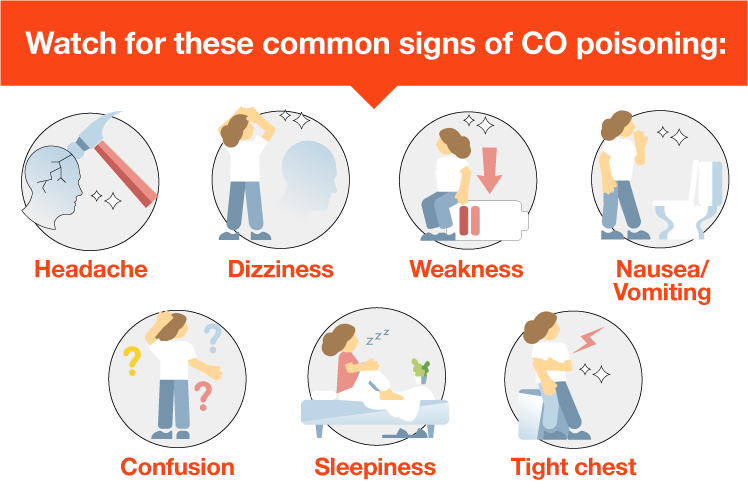| View in browser > |
 |
|
Welcome to National Grid’s Tips of the Trade for first responders. These tips are intended to help you respond safely and effectively to incidents involving natural gas and electricity. Please review them with your team.
|
|
| Be alert for carbon monoxide poisoning |
|
 |
| The leading cause of non-drug poisoning deaths in the U.S., carbon monoxide (CO) is a poisonous, colorless, odorless and tasteless gas produced when propane, wood, heating oil, natural gas or other fuels burn without sufficient oxygen. CO can build up in enclosed areas quickly, exposing victims to harmful or even fatal levels without their realizing it. Review these tips to stay alert for CO poisoning. |
|
|
|
| |
 |
Sources of CO |
| Most CO poisoning incidents are due to improper equipment installation, maintenance or use. Possible sources of dangerous CO levels include: |
| • |
 |
A vehicle running in an enclosed garage |
| • |
 |
A generator running indoors or running outdoors within 20 feet of a door, window or vent |
| • |
 |
A gas range or oven used for heating |
| • |
 |
Fuel-burning space heating or water-heating equipment inadequately vented |
| • |
 |
A propane camping stove, charcoal barbecue or kerosene lantern used indoors |
| • |
 |
A fireplace with a blocked chimney or vent pipe |
| • |
 |
Equipment or appliance with a blocked exhaust vent |
| • |
 |
Smoldering insulation on overheated electrical wires |
|
| |
|
| Response to CO incidents |
If a CO incident is reported in a building served by natural gas, notify National Grid immediately and safeguard yourself and others as follows: |
| • |
 |
Exercise extreme caution. CO is highly flammable and will ignite when its concentration is between 12 and 74 percent gas in air. Use full SCBA and PPE. |
| • |
 |
Evacuate the building, then ventilate. |
| • |
 |
Make sure victims get fresh air and immediate medical attention. |
| • |
 |
Shut off the gas at the aboveground service valve before the meter, provided you have been trained to do so. |
| • |
 |
Work with
National Grid to determine the source of the carbon monoxide and when it is safe for occupants to return. |
| • |
 |
If possible, carry a CO meter to help you identify the presence of CO. |
|
| |
|
|
 |
| CO alarms save lives |
| CO poisoning can be prevented with the installation of CO alarms, which are required in private dwellings in most states. The Consumer Product Safety Commission recommends installing a CO alarm in the hallway outside every separate sleeping area of a home. Encourage residents to install these alarms in their homes in accordance with local building codes. |
|
|
|
|
| For more first responder safety information, visit firstresponder.ngridsafety.com. |
|
|
|
| |
| |
|
| To report emergencies, call 911 and National Grid immediately. Always call 911 if you suspect a gas leak! |
| |
 |
| In case of gas emergencies: |
 |
Long Island and the Rockaways:
911 and 1-800-490-0045 |
 |
Metro New York:
911 and 1-718-643-4050 |
 |
Upstate New York:
911 and 1-800-892-2345 |
 |
Massachusetts:
911 and 1-800-233-5325 |
|
|
|
|
| |
|
|
|
| |
| |
|
 |
#14188 © 2023 Culver Media, LLC |
|
| |
|
|
|
 |
|
|